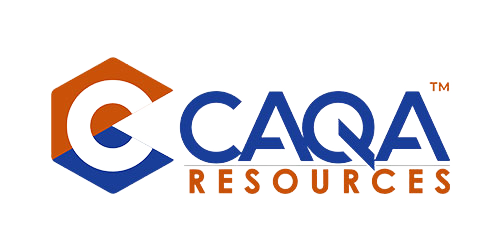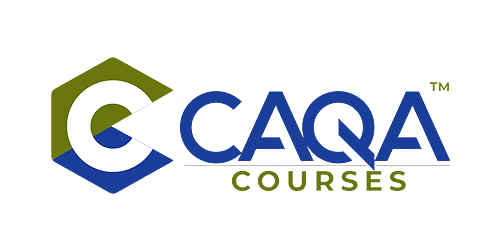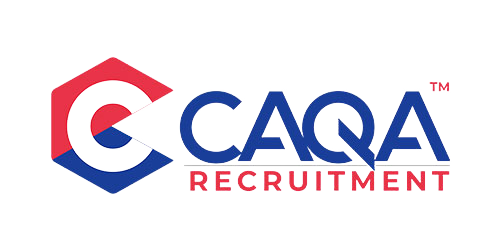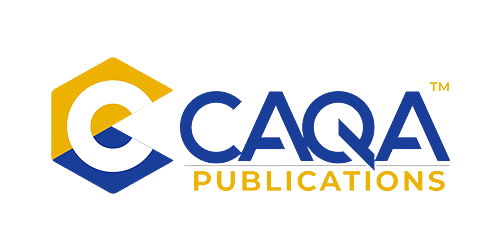The latest NSW Skills Plan data reveals a troubling trend: a significant drop in commencements in key vocational areas related to the clean energy workforce. While initiatives like Fee-Free TAFE aim to address workforce shortages in these critical sectors, the reality is that interest and engagement in such vocations are not meeting expectations. The decline in new enrollments highlights the complexities of building a skilled workforce and raises questions about the effectiveness of current strategies to align education offerings with industry demand.
The Data: Commencements Versus Completions
The data shows a stark contrast between commencements and completions across clean energy and energy transition training programs. For instance, Certificate III-level courses, which represent the bulk of training activity in these fields, experienced a significant drop in commencements from 23,920 in 2019 to 15,940 in 2023. While completions at the Certificate III level increased from 5,210 to 6,720 over the same period, the gap between those starting and finishing remains substantial.
Similarly, Certificate IV and Diploma-level courses showed varying trends. Certificate IV commencements experienced a slight increase from 9,440 to 10,200, but completions rose sharply from 2,645 to 4,325. This suggests that while engagement at higher levels of training is improving, overall enrollment numbers fail to meet the demands of a rapidly evolving energy sector.
The Challenge of Fee-Free TAFE
Programs like Fee-Free TAFE are designed to lower financial barriers to education and attract students to vocational areas in high demand, such as clean energy. However, the underlying issue is not just about access or affordability. Many prospective students simply lack interest in these fields or fail to see them as viable career options. For those who do enrol, a portion discovers early on that the vocation is not aligned with their interests or aptitudes, leading to high dropout rates.
Vocational training programs, particularly those in specialised industries like clean energy, often require students to have a clear sense of purpose and commitment. Yet only a small percentage of individuals enter vocational training with a well-defined career pathway. Many students are still in the exploratory phase of their career journey, trying out various options before settling on a long-term direction. For industries like clean energy, which require a combination of technical skills and sustained dedication, this exploratory approach may contribute to the ongoing skills gap.
The Nature of Career Planning
The data underscores a critical reality: most individuals do not meticulously plan their career pathways in advance. Career trajectories often evolve through practical experiences and exposure to different roles. For example, it is not uncommon for someone to work as an assistant or apprentice for several years before realising the need for formal qualifications. However, this organic career evolution does not align neatly with the structured pathways offered by TAFE or other training providers.
Clean energy roles, in particular, require not only technical expertise but also a strong alignment with individual interests and values. This makes attracting and retaining students in these programs uniquely challenging. To bridge the gap between vocational training offerings and workforce needs, a more nuanced approach is required—one that considers the motivations and aspirations of potential students.
Barriers to Entry in Clean Energy Training
Several factors contribute to the low commencement rates in clean energy workforce training, including:
- Perceived Industry Challenges: Clean energy jobs often require specialised skills and knowledge, which may intimidate prospective students. The perception of technical complexity or limited job security can deter enrollment.
- Lack of Awareness: Many individuals are unaware of the opportunities available in clean energy or how these roles align with broader societal goals, such as combating climate change.
- Geographical Disparities: Regional areas face unique challenges, with limited access to training facilities and fewer local job opportunities in clean energy sectors.
- Mismatch Between Offerings and Interests: While Fee-Free TAFE provides access to training, it cannot compel individuals to pursue careers they are not genuinely interested in.
The Role of Employers and Industry
Employers and industry stakeholders must play a more active role in addressing these challenges. Independent Registered Training Organisations (RTOs), for instance, often outperform public TAFEs in employer satisfaction due to their flexibility and industry alignment. These providers can serve as valuable partners in designing training programs that meet the specific needs of the clean energy sector.
Additionally, businesses must invest in raising awareness about career opportunities in clean energy. This includes outreach initiatives in schools, community programs, and collaboration with training providers to offer real-world insights into the industry. Providing apprenticeships, internships, and other hands-on learning opportunities can help demystify the sector and attract more students.
Rethinking Vocational Education
To address the decline in commencements and meet workforce needs, vocational education strategies must go beyond fee waivers and course availability. Key considerations include:
- Improved Career Guidance: Early career counselling and exposure to clean energy roles can help individuals make informed decisions about their futures.
- Targeted Marketing Campaigns: Highlighting success stories, job prospects, and the societal impact of clean energy careers can increase interest and engagement.
- Enhanced Regional Access: Expanding training options in regional areas and leveraging online learning platforms can make vocational education more accessible.
- Focus on Retention: Addressing the reasons behind dropouts through mentorship, support services, and flexible learning pathways can improve completion rates.
The NSW Skills Plan data paints a clear picture: while initiatives like Fee-Free TAFE aim to address workforce shortages, they fall short without addressing the root causes of low engagement in vocational training. For the clean energy sector, building a skilled and motivated workforce requires more than financial incentives—it demands a holistic approach that aligns training offerings with student interests, industry needs, and societal goals.
As Australia transitions to a sustainable future, the clean energy workforce will play a pivotal role. Addressing the challenges highlighted by the NSW Skills Plan is not just an educational imperative but a critical step toward achieving the nation’s environmental and economic objectives. By rethinking vocational education and fostering stronger collaborations between training providers, employers, and policymakers, we can ensure that the clean energy sector has the skilled workforce it needs to thrive.
Building the Workforce of the Future: The Allan Labor Government’s Free TAFE Initiativ
The Allan Labor Government is taking bold steps to address Victoria’s workforce challenges and align vocational training with the state’s critical needs. Through the Free TAFE initiative and targeted subsidised training, the government is making it easier for Victorians to access education and secure jobs in high-demand industries. Minister for Skills and TAFE Gayle Tierney has championed these reforms, highlighting the government’s commitment to addressing workforce shortages in areas such as housing construction, renewable energy, foundational skills, and regional development.
By allocating funding strategically and focusing on priority sectors, the government is aiming to create a pipeline of skilled workers while supporting regional communities and underrepresented groups. However, the reforms are not without controversy, as independent providers and metro training organisations voice concerns over reduced funding allocations. This article explores the details, implications, and potential impact of the government’s ambitious plan to reshape Victoria’s training landscape.
A Strategic Approach to Workforce Development
At the heart of the Allan Labor Government’s initiative is a commitment to aligning vocational education and training (VET) with the state’s critical workforce needs. This approach prioritises key sectors such as residential housing construction, renewable energy, and foundational skills like literacy and numeracy. By focusing on these areas, the government seeks to address skill shortages while creating meaningful employment opportunities for Victorians.
One of the standout elements of the plan is its emphasis on residential housing construction. With Victoria experiencing a housing crisis, the government aims to train more tradespeople to meet the demand for new homes. Courses in areas like carpentry, electrical work, and plumbing will play a central role in this effort. To streamline the pathway into these industries, some certificates will be replaced with targeted "Skill Sets" that allow individuals to complete only the units required to meet regulatory requirements. This pragmatic approach enables students to enter the workforce quickly, addressing immediate labour shortages.
The renewable energy sector is another key focus, reflecting the government’s commitment to supporting the transition to a cleaner economy. By training workers for jobs in solar panel installation, battery technology, and energy efficiency, the Free TAFE initiative aligns with broader state and national goals to combat climate change while fostering economic growth.
Expanding Access and Supporting Equity
The expanded eligibility for Free TAFE, introduced in January 2023, remains a cornerstone of the initiative. Victorians are now allowed to complete more than one Free TAFE course, enabling individuals to diversify their skills or switch careers without financial barriers. This policy is particularly beneficial for women, who represent 60% of Free TAFE applicants. By addressing gender imbalances in traditionally male-dominated industries like construction and renewable energy, the government is fostering a more inclusive workforce.
Regional communities are also set to benefit from increased funding for remote TAFE campuses. This investment ensures that students in regional and rural areas have access to critical training programs without the need for long commutes. Additionally, the government’s commitment to supporting community education providers, such as Learn Locals and Aboriginal Community Controlled Organisations, highlights its focus on delivering training that is accessible, culturally appropriate, and tailored to local needs.
Funding Challenges and Prioritisation
The $1 billion Victorian Training Guarantee underpins the government’s investment in training, supporting more than 530 courses and 85 accredited short courses across the state. In 2025, a greater proportion of this funding will be allocated to TAFEs, particularly regional TAFEs. This shift reflects the government’s goal of positioning TAFE as the central pillar of Victoria’s training system.
However, this reallocation has sparked concerns among independent Registered Training Organisations (RTOs) and metro-based providers. According to the Department of Jobs, Skills, Industry, and Regions, 19 providers will receive no funding allocations for 2025, while others will face significant reductions. This includes a 35% cut in the hourly rate for training delivery in metropolitan Melbourne and the removal of the online delivery loading introduced during the COVID-19 pandemic.
The Independent Tertiary Education Council Australia (ITECA) has expressed dissatisfaction with these changes, arguing that prioritising TAFEs and community providers over independent RTOs undermines the diversity and competitiveness of the VET sector. Independent RTOs often excel in employer engagement and tailored training delivery, making their reduced funding a point of contention.
A Focus on Foundational Skills
The government’s prioritisation of courses that teach foundational skills like literacy and numeracy reflects a broader strategy to address unemployment and workforce participation. By equipping unemployed Victorians with the basic skills needed for entry-level jobs, the government aims to reduce barriers to employment and foster economic inclusion.
Community organisations such as Learn Locals are critical to this effort, delivering training in accessible and supportive environments. For many students, these foundational courses serve as a stepping stone to further education and long-term employment.
Opportunities and Limitations
While the Free TAFE initiative presents a bold vision for workforce development, its success will depend on effective implementation and stakeholder collaboration. The focus on priority sectors like housing and renewable energy aligns with pressing state needs, but questions remain about whether the funding and structural changes will adequately address the complexities of Victoria’s labour market.
Opportunities:
- Addressing Skills Shortages: By targeting critical industries, the initiative has the potential to alleviate workforce gaps in housing and renewable energy.
- Supporting Equity: Expanded eligibility and regional funding promote inclusivity, particularly for women, Indigenous Australians, and regional students.
- Flexibility Through Skill Sets: The introduction of targeted Skill Sets streamlines pathways into employment, offering a practical solution to immediate labour shortages.
Limitations:
- Impact on Independent RTOs: Reduced funding for independent providers may limit the sector’s ability to deliver innovative and employer-aligned training.
- Regional Challenges: While funding for remote campuses is welcome, addressing infrastructure and staffing shortages will be critical to ensuring access.
- Transitioning from Online Delivery: Removing online delivery loading could discourage flexible learning options, particularly for students balancing work and family commitments.
Balancing Priorities: The Path Forward
To fully realise the potential of the Free TAFE initiative, the Allan Labor Government must address the concerns of independent providers and ensure that funding decisions do not inadvertently weaken the broader training ecosystem. Collaboration between TAFEs, RTOs, and industry stakeholders will be essential to deliver the high-quality, employer-aligned training needed to meet Victoria’s workforce challenges.
Additionally, the government must invest in robust data collection and analysis to monitor the outcomes of its training programs. Understanding the long-term impact of initiatives like Skill Sets and expanded eligibility will provide valuable insights for refining policies and ensuring they remain responsive to labour market needs.
Finally, a holistic approach to workforce development is needed—one that integrates training with broader economic and social policies. For example, addressing housing shortages and regional economic disparities will require coordinated efforts across government, industry, and education providers.
The Allan Labor Government’s Free TAFE initiative represents a significant investment in Victoria’s workforce and a commitment to addressing critical skills shortages. By focusing on priority sectors, expanding access, and supporting regional and community training, the initiative has the potential to create lasting benefits for students, employers, and the broader economy.
However, the challenges highlighted by independent providers and regional stakeholders underscore the importance of a balanced and inclusive approach. By addressing these concerns and fostering collaboration across the VET sector, the government can ensure that Free TAFE delivers on its promise to equip Victorians with the skills they need for rewarding careers and a prosperous future. As the state moves forward, maintaining a focus on equity, quality, and adaptability will be key to building a training system that meets the diverse needs of all Victorians.


































